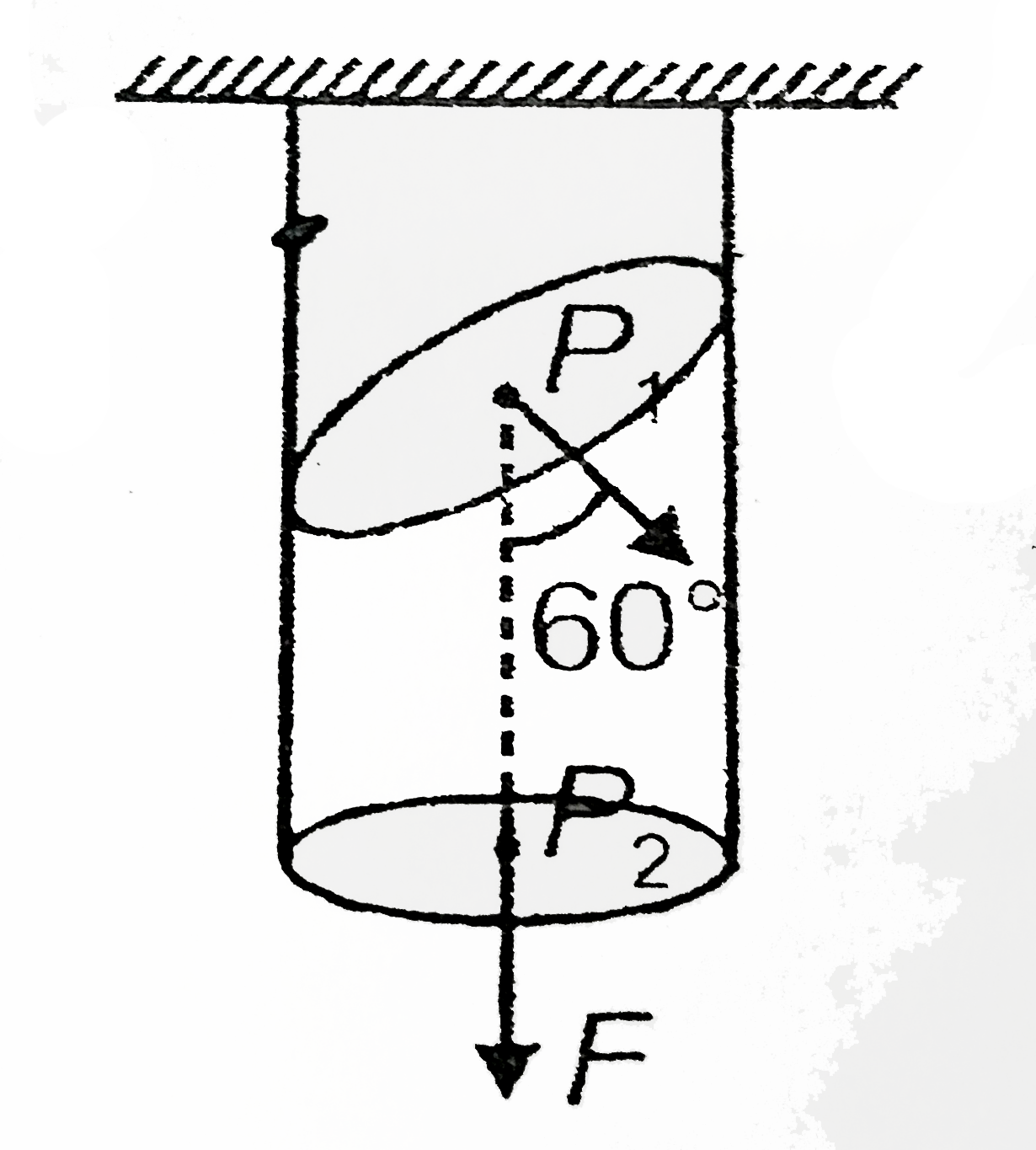Define stress and explain the types of stress.
Step-by-Step Text Solution
Step 1: Define Stress
Stress is defined as the internal force per unit area that develops within a material when it is subjected to an external force. It is a measure of the intensity of the internal forces acting within a deformed body. Mathematically, stress (σ) can be expressed as:
σ=FA
where F is the force applied, and A is the area over which the force is distributed.
Step 2: Explain Types of Stress
Stress can be classified into several types based on the nature of the force applied and the direction of the stress. The main types of stress include:
1. Normal Stress: This occurs when the force is applied perpendicular to the surface of the material. It can be further divided into:
- Tensile Stress: When the force tends to stretch or elongate the material.
- Compressive Stress: When the force tends to compress or shorten the material.
2. Shear Stress: This occurs when the force is applied parallel to the surface of the material. It tends to cause the layers of the material to slide over each other.
3. Tangential Stress: This is another term often used interchangeably with shear stress, referring to the stress that acts tangentially to the surface.
4. Longitudinal Stress: This is a type of normal stress that occurs along the length of a material, typically when it is subjected to tensile or compressive forces.
Summary of Types of Stress
- Normal Stress: Perpendicular to the surface (includes tensile and compressive stress).
- Shear Stress: Parallel to the surface.
- Tangential Stress: Similar to shear stress, acting tangentially.
- Longitudinal Stress: Along the length of the material.
Stress is defined as the internal force per unit area that develops within a material when it is subjected to an external force. It is a measure of the intensity of the internal forces acting within a deformed body. Mathematically, stress (σ) can be expressed as:
σ=FA
where F is the force applied, and A is the area over which the force is distributed.
Stress can be classified into several types based on the nature of the force applied and the direction of the stress. The main types of stress include:
- Tensile Stress: When the force tends to stretch or elongate the material.
- Compressive Stress: When the force tends to compress or shorten the material.
- Normal Stress: Perpendicular to the surface (includes tensile and compressive stress).
- Shear Stress: Parallel to the surface.
- Tangential Stress: Similar to shear stress, acting tangentially.
- Longitudinal Stress: Along the length of the material.
Similar Questions
Knowledge Check
According to Hooke's law of elasticity, if stress is increaed, the ratio of stress to strain
AdecreasesBincreasesCbecomes zeroDremains constant
STATEMENT - 1 : The value of modulus of elasticity depends on the magnitude of the stress and strain
and
STATEMENT - 2 : A given material have different moduli of elasticity depending on the type of stress applied.
View SolutionBreaking stress depends on
View SolutionDefine the term stress for plnats .Discuss briefly the two types of stress encountered by plants .
View SolutionA massless uniform rod is subjected to froce F at its free end as shown in figure. The ratio of tensile stress at plane P1 to stress at P2 is

View SolutionWhat is called the ratio of the breaking stress and the working stress?
View SolutionAccording to Hooke's law, within the elastic limit stress/strain = constant. This constant depends on the type of strain or the type of force acting. Tensile stress might result in compressional or elongative strain, however, a tangential stress can only cause a shearing strain. After crossing the elastic limit, the material undergoes elongation and beyond a stage beaks. All modulus of elasticity are basically constants for the materials under stress.
If stress/strain is x in elastic region and y in the region of yield, then
View SolutionDefine stress, strain and Young's modulus of an elastic material. Describe an experiment for measuring the Young's modulus of a material in the form of a wire.
View Solution
